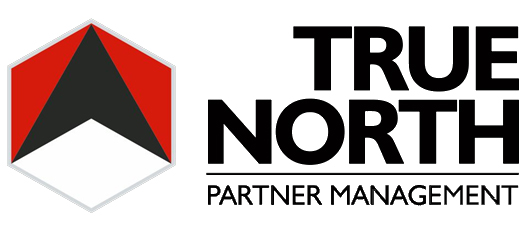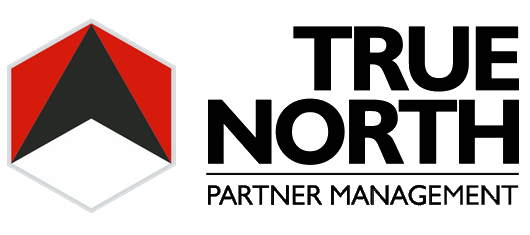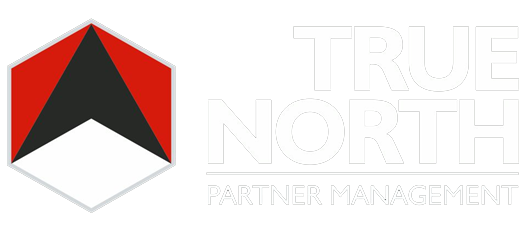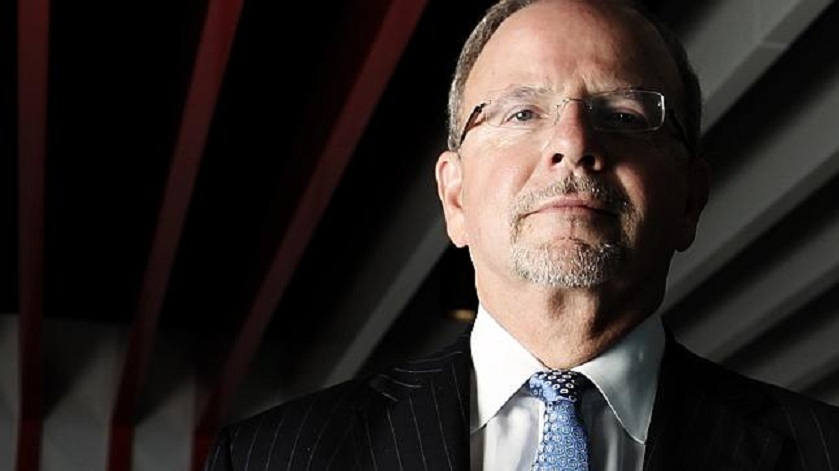The following post originally appeared on Forbes | August 13, 2014
In their book, Strategic Leadership: Theory and Research on Executives, Top Management Teams, and Boards, authors Bert Cannella, Sydney Finkelstein and Donald Hambrick discuss, among other things, the concept of firm expansion. From a managerialist perspective, they conclude that many CEOs seek to maximize firm size because, quite simply, it is much more controllable than just about anything else in their wheelhouse, including profits, increasing market share, and the development of expertise and/or reputational capital.
This is interesting, as in the corporate world, CEOs are afforded almost infinite options for creating competitive advantage, and therefore, increasing market share and profits: differentiation, integration, focus, joint ventures, optimization, etc. The legal world’s reality, as of this moment, is quite the opposite. What many onlookers don’t realize is that law firm alphas don’t enjoy the same advantage of copious strategic options. In fact, major firms only have a handful to mention, with expansion being one of them. And where firms were, up until the global financial crisis, seeking to continue their upward momentum, the stress of the market has boosted those ambitions for some, and turned them into a means of survival for many others. As a result, we are seeing a massive consolidation in the market—firms are merging.
Wanting to know what goes into a successful merger, I turned to one of the most—if not the most—knowledgeable resources the legal market has to offer on the subject: Peter Kalis of K&L Gates.
When he took seat as chairman in 1997, the firm had just under 400 attorneys in six offices along the east coast. 17 years and eight mergers later, K&L Gates now has 47 offices, housing over 2,000 attorneys on five continents. Kalis has also received several highly coveted accolades: The American Lawyer named him among the 50 most influential innovators in the global legal industry in the last 50 years, The National Law Journal included him on its inaugural list of the top 50 legal business trailblazers and pioneers, and The Lawyer declared him as being among the ten individuals in the global profession who will shape the international market for legal services in the next decade. See our exchange below:
Parnell: What would you say are the top two or three metrics that need to match up when you’re looking at a potential merger partner?
Kalis: No partners on either side of the merger are likely to vote in favor of it if by doing so they’re going to have a skinnier pay package over the years because of the merger. So expectations of future profitability have to be aligned. That’s different from saying future profitability in fact has to be aligned. [K&L Gates is] in a lot of different markets; some of those markets just generate—because of the market’s environment—higher or lower profits than other markets, yet they’re markets that we want to be in.
So the key point is an alignment of expectations that are reasonable. And in our firm that means embracing our generally investment-oriented approach towards matters of firm significance. In the merger context, therefore, we pay a lot of attention—because it’s indicative of how another firm resolves the tension between consumption and investment—to how the firm capitalizes itself. So it’s more a balance sheet exercise for us: Does the other firm capitalize itself through debt or through equity? Or both?
If there’s a firm in which the partners have never really participated meaningfully in the capitalization of the business, that doesn’t consign them to the last level of purgatory or anything, but it probably is indicative of a cultural misalignment.
More broadly, in a merger context, our view tends to be informed more by the strategic significance of the market and the quality of the talent than by P&L-type information. We have confidence—usually confirmed by experience; maybe not 100 percent—but we have confidence that the right law partners will do well as part of our firm. And if the market is a meaningful one for us, and one that has the potential to interact with the rest of our platform, and the other firm has properly motivated partners, then that can be a great market for us, and we go forward.
Parnell: Okay, so what I’m hearing is more so—and perhaps obviously—you’re looking at financially healthy firms. The “yes” or “no” being dictated by cultural fit, quality, and caliber of the attorneys, and further, the future profitability of the markets that you’re looking to approach.
Kalis: Correct. And the strategic significance being especially viewed through the lens of whether that market is potentially one that interacts with the rest of our platform. Are there clients that compete in national and global markets, and where the relationships between those clients and the people we’re talking with are sufficiently strong that they have a good chance of displacing their current providers outside of that locale.
We think of our law partners as having, among other duties, not only the duty to be a great destination for work sourced by them or others, but also the duty to be a portal to the law firm at-large through which clients can introduce legal commerce. And so we will look at people and their market as to whether they can fulfill those two missions.
Parnell: “Strategic linkups” are something that I’ve seen touted very heavily in mergers. And sometimes, when you really look at them under a microscope, it has nothing to do with strategy: The firms are solely pursuing short term financial interests. And as [The Failing Law Firm] shows, those usually don’t work out.
Kalis: Correct. And the predicate, David, as is probably evident to anyone who looks at our financial disclosures, is that we just don’t feel that metrics expressed as averages, for our kind of law firm, ought to dictate our strategy. For example, it doesn’t bother me in the slightest that, in the context of our merger with a great Australian firm, that the Australian market generally yields a lower revenue per lawyer that affected our average global RPL. Who cares? I mean really, who cares? Certain legal publications? That’s fine. Let them care. We play a long game at K&L Gates, and managing to metrics expressed as averages is a fool’s paradise, emblematic of short-term thinking.
Parnell: If you have the right culture—one that is integrated, cohesive, collaborative, team oriented, and is future-oriented—sure, who cares? Most partners won’t, because if a merger is strategic, and it strengthens the firm as a whole, the lawyers, understanding that this is the ship that is taking them through open waters, will appreciate the renewed seaworthiness.
Competitive intelligence is a real boon if one can acquire it—especially in a mature market like this. If you could get one piece of information from your top three competitors, what would that be and why?
Kalis: It would probably be the retirement day of the incumbent managing partner. Let’s just say that that could tell me very different things. I’ve been doing this so long I know most of these folks; some of them are more capable than others. Incidentally, if you gave me a shot at another piece of information, I would ask for their debt load. As Nassim Nicholas Taleb has observed, enterprises that capitalize themselves with debt instead of equity have to be able to predict both future revenues and future black swan events, which are, by definition, unpredictable.
Parnell: Interesting. I did a piece on succession planning a number of months ago with Patrick McKenna—it is a vulnerability for many firms. Another vulnerability I’ve seen is lack of quality control and consistency due to large geographic footprints. With K&L’s expansive reach, how are you ensuring the consistency of your work product? This goes to your governance model, perhaps.
Kalis: Well I think there are a lot of things involved from just the lawyer-intake side of things, whether it be by way of a merger, or lateral partners, or promotion of associates, and so on. With the initial hiring of lawyers, I think you can never get away from fundamental issues of quality; you just can’t. But there are things [a firm] can do, even when you have high quality lawyers, to screw up consistently high-quality work product. And I think you put your finger on one of the things, which is having balkanized governance, balkanized practice management, and so on. Balkanization really heightens the risk of inconsistent quality across the platform. As a fully integrated firm, we dodge that bullet.
Parnell: How are you guys promoting collaboration throughout the firm, specifically?
Kalis: Well, partly by design and partly by execution. Let me start more fundamentally. I actually think that law is collaborative, and lawyers are collaborative, and only law firms can screw that up. There’s an old saw that if you go through law school on your own you’re either a genius or a fool. Law school is all about talking about ideas with your fellow students, with your professors; it’s about reading the ideas written by other people; it’s about writing them yourself to be read by other people; it’s a very social exercise. Virtually all complex undertakings for clients are done in a team context.
So how can law firms screw it up? One way is structurally: they just have the design wrong. Do they have internal barriers to collaboration, internal profit pools, [disjointed] technology platforms—in some cases even firewalls—within the firm? Incredibly important is the reward system. Does the reward system incentivize collaborative behavior, or does it de facto reward more silo’d behavior? So I would say design: How your law firm is designed; how your compensation system is designed. I think that those are big deals.
But we all know situations where the design is perfect and it’s undermined by the execution; that’s where management comes in. Management has to be dedicated first, last, and always to a collaborative approach to the practice of law. Only good things happen from that. Collaboration is the greatest antidote to loss exposures, and that means having people operating in teams subjected to a peer review process in the ordinary course. Only good things happen when you collaborate—for clients, for the law firms, and for the individual lawyers.
Parnell: In one of your previous interviews you speak of an investment versus consumption mindset. What are you investing in at K&L Gates?
Kalis: That’s another way of asking, do you openly embrace and prioritize your inter-generational mission? Do you really do that, even at the risk of perhaps not always meeting the compensation expectations of some of your current partners? Is everybody trying—or most everybody trying—to make it a better firm than the one they came to or inherited? And that means, in our case, no mortgage overhang. We don’t have any bank debt and no future generation has to worry about paying off our sins; we’re paying off our obligations in the ordinary course.
So we invest in our brand; we invest in our IT platform; we invest in our growth; and we invest in strategic markets, preparing us for the battles of the 21st century. We invest in talent—a lot of lateral candidacies and our initial recruitment of young lawyers.
Parnell: What would you say are your top one or two learning mistakes during your incumbency?
Kalis: This question doesn’t really resonate so much with me, and I’m going to explain why it doesn’t. I don’t look back a hell of a lot, but when prompted from time to time, I’ll look back and what I see is a whole tapestry of decisions that cannot clearly be denominated as mistakes or successes.
In [The New York] Times there was an article about the CEO of Morgan Stanley MS +5.29%. And somebody in the piece says that a CEO, during his or her career, has five big decisions to make and [James Gorman] got his right. I’m sure they know more than I do, but that’s not my life. My life is a tapestry, or it’s an aggregation of a lot of decisions that really blend into the fabric, and it’s hard to sort out which ones are sufficiently distinct to brand as a mistake or a success.
Do I learn from all of them? Constantly. Absolutely constantly. But I learn from my successes—what other people think are my successes—more than I do from what other people think are my mistakes. … Now in fairness I think that honest people would line up around a really big building to say I make more mistakes by 9 a.m. than they have in their lifetimes. So it’s not that I haven’t made mistakes, I’m sure I’ve made a tremendous number of them and someday I may be able to reflect back and to tease out which decisions are mistakes, but that’s just not the way I think, David. Right now, I cross bridges and burn them behind me.
Parnell: Regarding the bottom of the leverage pyramid: How do you see this playing out in the future?
Kalis: Well, this is the subject of my article that appeared recently [in The Lawyer]. Basically I just challenge the view that “BigLaw” is threatened by a commoditization crisis. And the way I put it in the article is, “Look, there’s this perceived black box of legal services, out of the bottom of which—the continuously commoditized bottom of which—there is leakage, seepage, into the hands of the alternative providers, LPOs, and so on. And my view of that is, “yes, and that’s a good thing for a variety of reasons.”
What nobody talks about is that if a firm is positioned properly, more highly complex work, and I might say more lucrative work, is flowing into the top of the box. That’s the nature of markets, not some sense of a finite, defined set of services. It’s not that you wake up one morning and, “Woops, we’ve lost something else because of the LPOs.” It’s a matter of positioning, and repositioning, and repositioning your law firm to meet the needs of clients.
If you focus on the top of the box, you see our clients dealing with three principal drivers of legal requirements in the 21st century:
One is the movement of people, products, ideas, capital, commodities, and services across national borders. Globalization. So as borders become less significant to the flow of commerce, sovereign legal systems paradoxically become more important. The only way they can become less important is if you’ve got really expert lawyers that manage down the significance of national borders.
The second big driver is the ratchet-like, and often inconsistent, interventions of governments around the world in the private markets. Not as a partisan matter, necessarily, but because of the explosion of knowledge that public decision makers can rely on. The examples I use in [The Lawyer] compare what we know now to ten years ago about the systemic weaknesses of the global financial system or about climate change. If you’re a regulator or a legislator armed with that knowledge, you act; you don’t act wisely, necessarily, but whether or not you do, there’s a need for lawyers at the governmental interface.
The third area is innovation. Just the extraordinary percentage of the value of the world’s leading enterprises that is housed in intellectual property; it’s the creation and protection of intellectual property.
Somebody sent me a published study a good while ago—I recall the study’s year of focus as being 2004, but I forget the sample, whether it was the fortune 500 or the global 500. Then, it was estimated that 40 percent of the asset value of that group was housed in intellectual property. The reason that year stuck in my mind is because that was before the iPhone; that was before the iPad; before the whole Smartphone revolution. Think what the percentage is now…. So if you’re focused on the top of the box, you’re looking at a constant inflow of work arising from globalization, regulation, and innovation, and I just don’t think the alternative providers are up to dealing with it. In fact I know they’re not.
As I said in [The Lawyer], what’s called seepage of commoditized work is an entirely healthy way of refreshing the business model of law firms. It’s like scaling; it’s like glaciers caving at the sea; it’s like your skin scaling and discharging old cells. It’s just what happens. It’s natural. It’s not be feared. It’s to be embraced for whatever that’s worth.



